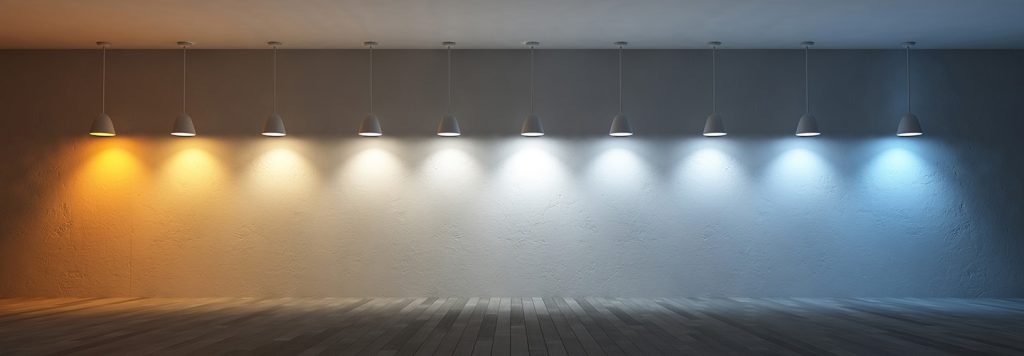Getting just the right light
CED of Denver shares the latest on LED lighting technology

{Each quarter we highlight a top performing trade partner as a feature story in our Energy Exchange newsletter. These companies qualified for our Energy Efficiency Partner Awards based on their projects submitted in 2017.}
In an era of light-speed change and disruption, our indoor environments are being affected by new LED lighting technologies in surprisingly personal ways.
And that’s important. According to a recent report, from window manufacturer VELUX,
25 percent of Americans1 spend almost an entire 24 hours without going outside.
Good or bad, we as humans are evolving into indoor people where the only time we get daylight is on the commute to work or school...
The good news for our customers
Today we’re on the cusp of an interior LED lighting revolution. LED lighting can now be used to help heal our bodies, put us in more productive moods and even balance our internal clocks to help us have better even more useful sleep cycles.
Matt Matheny of CED (Consolidated Electrical Distributors) in Denver explains “while many of these breakthroughs are just in their infancy, the potential impacts can be impressive and just may be around the corner.”
Color-tunable LED lighting fixtures now provide potent capabilities
In newer fixtures, LED lighting can make adjustments in color and brightness.
Generally, color tuning offers several common ranges and appearances. These are measured in Kelvin (K) or absolute temperature.
- Soft warm white - 2700K to 3000K - Often seen as the standard color of most incandescent bulbs, this range can enhance the warm mood of places like restaurants, lounges or spas.
- Neutral white - 3500K to 4100K - This range is regarded as the light that’s good for commercial or retail functions as well as working and office spaces.
- Cool white or daylight - 5000K to 8500K specialized - More in the blue part of the color spectrum, this type of light is seen as being ideal for reading because of the high-contrast quality. Schools are examining how to use these settings to help students to focus and concentrate.
Lumen tuning also available
With LED lumen tuning, you can have selectable output from roughly 22-42 watts providing capabilities from 2000 to 3000 and up to 4000 lumens for a specific fixture.
Combine all the variables of lumen and color, and you can have the potential for as many as 12 settings in one fixture offering an entire scope of lighting options.
A healing light?
By spending so much time inside, the lack of daylight cycles may be confusing our circadian rhythms2 and our sleep/wake sequences, reducing or disrupting our production of sleep enhancing hormones including dopamine, serotonin, cortisol, and melatonin.
LEDs can help balance cycles by providing blue light for day cycles and yellow light to help us calm down for sleep at night. Hospitals and clinics are exploring the healing power of lighting to assist with sleeping and restfulness to aid in recovery. More research and field testing are needed to help develop baselines and establish protocols.
Other purpose-driven lighting options are taking hold.
Schools and colleges are also taking a closer look at using tunable lighting options in their facilities. Research is showing that different scenes (lighting color settings) for lectures, testing and reading can offer improved performance and outcomes.
Carpe diem – seize the daylighting
Today’s building design movement is taking on more daylighting into floorplans. This approach works with the arc of the sun as it crosses the sky. There are many variables such as the position of the building, the time of year, the type of overhang around windows (if any) even the tinting of the windows and window treatments play into how much daylight can effectively be used to help provide natural light in a structure.
Designers are balancing daylight with the new LED color and lumen tuning to create environments that adjust to the needs of the occupants, throughout the day and seasons.
Look — no wires
Another industry trend in the market is wireless controls which use radio frequency, Bluetooth, and other wireless formats to reduce wiring costs and hassles. It’s becoming more common on today’s projects.
Rebates continue to seal the deals.
“We’re really about asking the right questions to help the LED lighting sales process. Sometimes the purchasing trigger may be a broken ballast or a smashed lens. Whenever there is an opportunity to repair, replace or upgrade, the LED is most often the answer. And with LED lighting rebates from Xcel Energy, it’s a no-brainer for our customers.
MINI CASE STUDY
After the record-breaking hail storm, mall meets a Black Friday deadline.
When a massive hail storm hit the Colorado Mills shopping mall in Lakewood in early May, the entire 1.1 million-square-foot structure was left unusable by water damage. The insurance loss was $1.4 billion — the highest amount ever in Colorado recorded history.
All lighting elements inside and outside on-site needed replacement — and the clock was ticking towards a Black Friday deadline.
After weeks of insurance assessment and paperwork, the team at CED had to design a master plan to change, source and install almost all the lighting. So far 11,000 fixtures have been replaced. “It took incredible focus, diligent determination and some luck to pull off this project,” comments Matheny.
With all-new fixtures in place for Black Friday, rebates and long-term energy savings on the horizon, the mall has good reason to celebrate this massive rebound.
Learn more about our latest lighting rebates.


